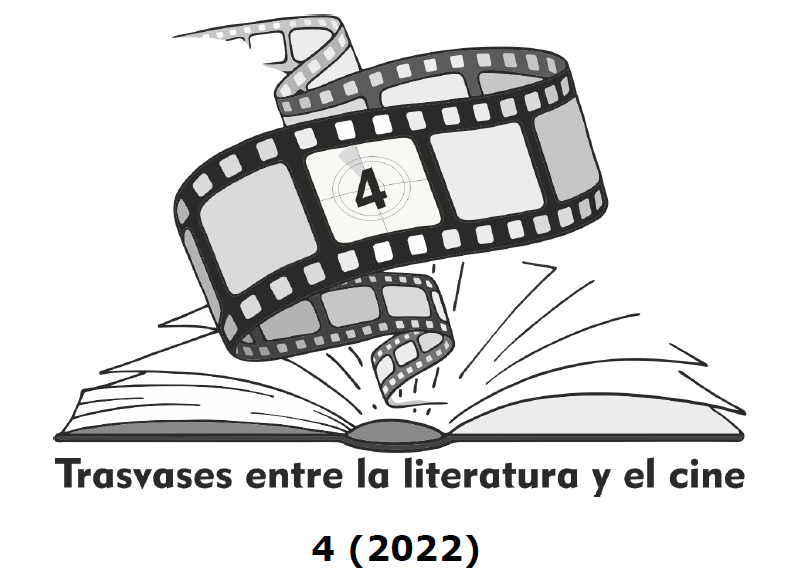Comparative Analysis of He Said Yes/ He Said No, by Bertolt Brecht and Dogville, by Lars Von Trier.
Breaking of the Aristotelian Precepts and Eastern Theatre Influence
DOI:
https://doi.org/10.24310/Trasvasestlc.vi4.12358Keywords:
Dogville, Brecht, Eastern theatre, impossible worlds, metalepsis, characters place, actors placeAbstract
In this article, we have studied the common literary elements that He said yes/ He said no, play written by Bertolt Brecht and the film Dogville, by the director Lars von Trier have with the Eastern theatre. Baring that purpose in mind, we have done a comparative study of these two works considering aspects such as mimesis, the breaking of classical unities (unity of place, above all), generic hybridism and the possible metalepsis in these artistic creations. Moreover, taking this elements into account, we have analyzed the common features with Eastern theatre.Downloads
Metrics
Publication Facts
Reviewer profiles N/A
Author statements
Indexed in
-
—
- Academic society
- N/A
- Publisher
- Universidad de Málaga
References
AGUIAR E SILVA, Vítor Manuel (1990), Teoria da Literatura, Coimbra, Almedina.
ALBALADEJO, Tomás (1986), Teoría de los mundos posibles y macroestructura narrativa, Alicante, Universidad de Alicante.
ARISTÓTELES (2003), «Arte Poética», en Aristóteles y Horacio, Artes poéticas, trad. de A. González, Madrid: Visor, págs. 44-147.
BRECHT, Bertolt (2004), Escritos sobre el teatro, Madrid, Alba.
BRECHT, Bertolt (1983), Pequeño organon para el teatro, Granada, Editorial don Quijote.
BRECHT, Bertolt (1989), «El consentidor y El disentidor», en Teatro completo, III, Madrid, Alianza Editorial.
CASTRO, Sixto (2005), En teoría, es arte. Una introducción a la estética, Salamanca-Madrid, San Esteban-EDIBESA.
CROCE, Benedetto (1979), Breviario de estética, Madrid, Espasa-Calpe.
ESTÉBANEZ CALDERÓN, Demetrio (1999), Diccionario de términos literarios, Madrid, Alianza.
FRIEDMAN, Norman (1967), «Point of View in Fiction: The Development of a Critical Concept», en P. Stevick (ed.), The theory of the novel, Nueva York, The Free Press, págs 108-138 [En línea: https://www.jstor.org/stable/459894?seq=1#metadata_info_tab_contents. Fecha de consulta: 15/03/2021]
GARCÍA BERRIO, Antonio y HUERTA CALVO, Javier (1992), Los géneros literarios: sistema e historia, Madrid, Cátedra.
GENETTE, Gérard (1989), Figuras III, trad. de Carlos Manzano, Barcelona, Lumen.
GENETTE, Gérard (1993), Ficción y dicción, Barcelona, Lumen.
GRAUMANN SÖLTER, Andrés (2011), «Efectos estéticos y el gesto teatral en Bertolt Brecht y las huellas posdramáticas en Heine Müller», Repertório, Salvador, 2, págs. 11-22 [En línea: https://www.google.com/url?sa=t&rct=j&q=&esrc=s&source=web&cd=&ved=2ahUKEwifmoXCv_jvAhXBy4UKHYp1A9MQFjAAegQIBBAD&url=https%3A%2F%2Fperiodicos.ufba.br%2Findex.php%2Frevteatro%2Farticle%2Fdownload%2F5722%2F4130&usg=AOvVaw28BWbYBFCvnkyIrf1PsKwi. Fecha de consulta: 08/04/2021].
LEBRÓN SAVIÑÓN, Mariano (1981), «El teatro en el Japón», Revista Aula, 37, págs. 9-21.
MARTÍN JIMÉNEZ, Alfonso (2004), «Los géneros literarios y la teoría de la ficción: el mundo del autor y el mundo de los personajes», en C. Mendes de Sousa y R. Patrício (eds.), Largo mundo alumiado. Estudos em homenagem a Vítor Aguiar e Silva, Braga, Centro de estudos humanísticos Universidad do Minho [En línea:
http://uvadoc.uva.es/handle/10324/3203. Fecha de consulta: 05/04/2021]
MARTÍN JIMÉNEZ, Alfonso (2015), Literatura y ficción. Ruptura de la lógica ficcional, Berna, Peter Lang [En línea:
http://uvadoc.uva.es/bitstream/handle/10324/22944/A.%20Mart%C3%ADn%20Jiménez%2c%20Literatura%20y%20ficción.%20La%20ruptura%20de%20la%20lógica%20ficcional.pdf?sequence=1&isAllowed=y. Fecha de consulta: 02/02/2021].
PAN, Suping (2004), Estudio comparado del teatro chino y el teatro del Siglo de Oro español, Valladolid, Universidad de Valladolid [tesis doctoral].
PLATÓN (1988), Diálogos IV. República, ed. de C. Eggers Lan, Madrid, Gredos.
RODRIGO BURÓN, Dulcinea (2013), «El origen del teatro épico. Fundamentos para una práctica revolucionaria», SCIENTIA HELMANTICA. Revista Internacional de Filosofía, 1, págs 137-163. [En línea: http://revistascientiahelmantica.usal.es/docs/Vol.01/08.-Elorigen- del-Teatro-Épico.pdf. Fecha de consulta: 12/04/2021]
VON TRIER, Lars (Dirección) (2003), Dogville [Película].
Downloads
Published
How to Cite
Issue
Section
Categories
License
All authors published in this journal accept the following copyright terms:
a. Authors retain their authors´ rights (copyright) and grant First Publication Rights to the journal, which whill be published under a the Creative Commons Attribution-NonCommercial-ShareAlike 4.0 International (CC BY-NC-SA 4.0) license. All about this license is available in the following link: <http://creativecommons.org/licenses/by-nc-sa/4.0>
b. Authors may separately establish additional agreements for the non-exclusive distribution of the version of the work published in the journal (e.g. including it in an institutional repository, or publishing it in a book) with an acknowledgement of its initial publication in this journal.
c. Authors are allowed and encouraged to disseminate their work electronically (e.g. in institutional repositories or on their own website) as this can lead to productive exchanges, as well as earlier and more extensive citation of published work.
The author is responsible for obtaining permission from the copyright holder when using copyrighted materials.
This electronic journal is published by University of Málaga (UmaEditorial), thus it is necessary to cite the origin of any partial or total reproduction.








22.png)










